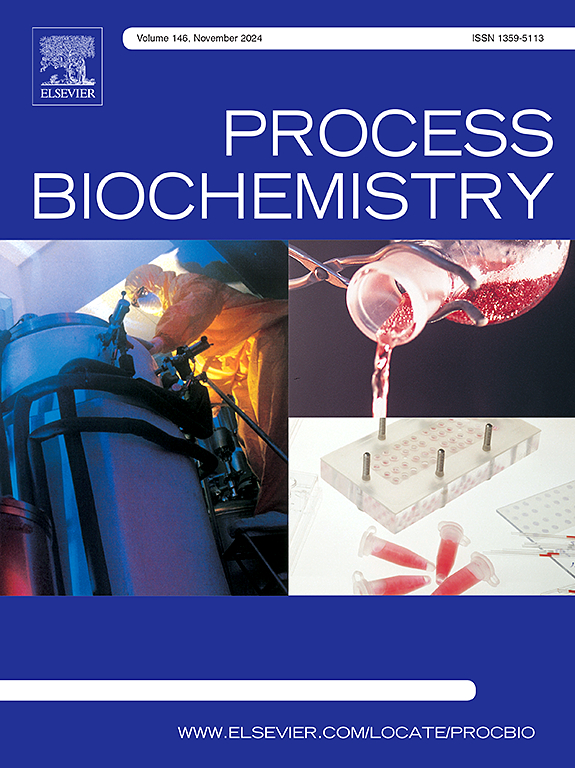Sustainable bacterial chitosanase production using soybean meal hydrolysate: Insights into biochemical and hydrolysis characteristics
IF 3.7
3区 生物学
Q2 BIOCHEMISTRY & MOLECULAR BIOLOGY
引用次数: 0
Abstract
The chitosanase Csn from Bacillus subtilis 168, previously recombinantly expressed in B. subtilis PT5 called PT5(MT1-Csn) had demonstrated potential for converting chitosan into chitosan-oligosaccharides (COS). Herein, a new fermentation medium containing soybean meal hydrolysate (SMH), an oil byproduct, was used for enhancing PT5(MT1-Csn) chitosanase activity. The purified PT5(MT1-Csn) exhibited activity (1018.58 U mL−1) 11.5 times higher than the wild-type (WT) enzyme at pH 5.0 and 50 °C. Both PT5(MT1-Csn) and WT exhibited similar pH stability (3.0–9.0) and thermostability. The melting temperature (Tm) values of PT5(MT1-Csn) (51.38 °C ± 0.11) and WT (51.68 °C ± 0.03) were similar. After hydrolysis, chitosan-oligosaccharides (COS) without glucosamine or acetylglucosamine were produced, with a degree of polymerization between 2 and 4. The findings of the current study suggest that SMH can be effectively utilized to not only enhance the PT5(MT1-Csn) activity and reduce enzyme production cost but also to effectively valorize the oil byproducts.
求助全文
约1分钟内获得全文
求助全文
来源期刊

Process Biochemistry
生物-工程:化工
CiteScore
8.30
自引率
4.50%
发文量
374
审稿时长
53 days
期刊介绍:
Process Biochemistry is an application-orientated research journal devoted to reporting advances with originality and novelty, in the science and technology of the processes involving bioactive molecules and living organisms. These processes concern the production of useful metabolites or materials, or the removal of toxic compounds using tools and methods of current biology and engineering. Its main areas of interest include novel bioprocesses and enabling technologies (such as nanobiotechnology, tissue engineering, directed evolution, metabolic engineering, systems biology, and synthetic biology) applicable in food (nutraceutical), healthcare (medical, pharmaceutical, cosmetic), energy (biofuels), environmental, and biorefinery industries and their underlying biological and engineering principles.
 求助内容:
求助内容: 应助结果提醒方式:
应助结果提醒方式:


